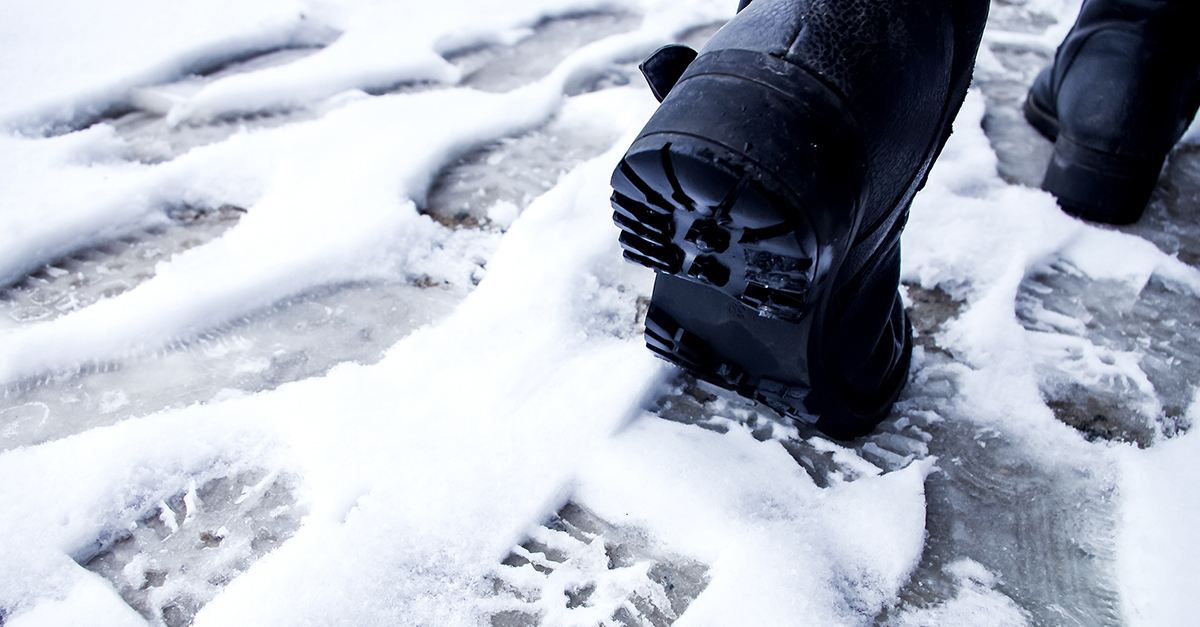As we enter the winter season and prepare for snow, ice, and other inclement weather, proper floor care becomes even more crucial. Individuals entering your facility will inevitably track in moisture with them. If not properly addressed, this debris can accumulate, creating a potential hazard to your floors and to building occupants. Proper mats can help trap the extra moisture, dirt, and debris brought in while simultaneously safeguarding your floor from damage.
Prepare for winter with the right mat system to maintain a safe and hygienic environment.
Why use mats?
Winter brings grime and salt. These contaminants can scratch and stain floors and cause slippery surfaces. These risks result in added costs related to facility repairs and building inhabitant injuries. In some cases, the added wear and tear can accelerate large capital spending.
Mats placed at all entry points serve as the first line of defense in protecting your facility. When a facility isn’t equipped with entrance matting, 1,500 people can remove up to 42% of a floor’s finish just by entering the building and tracking in debris from their shoes, according to statistics provided by 3M. With proper matting, you can effectively safeguard your floors from the harmful effects of the outside.
Snow and ice are some of the most common causes of slips, according to the National Institute for Occupational Safety and Health (NIOSH). High-performance mats contain fibers with absorbent properties that help remove moisture from facility occupants’ shoes to provide increased slip resistance.
In addition to moisture, the exterior of a shoe harbors around 421,000 units of bacteria, according to a study conducted at the University of Arizona. Using a mat system that can effectively scrape off and absorb a significant portion of this bacteria will serve as a crucial defense against the spread of potentially harmful microorganisms in your facility.
Create a mat system
It’s important to understand the different types of mats and where to place them. The entryway is a vulnerable place because it’s where people tread just before entering your facility. To identify any potential floor hazards, the National Floor Safety Institute (NFSI) and the American National Standards Institute (ANSI) have created a set of entrance matting standards. These standards include information on proper mat selection, installation, care, and maintenance. They recommend a dual-mat system of scraper mats and carpet/floor mats.
Adding scraper mats at all entrances helps prevent slips and minimizes dirt and debris carried in by shoes. These mats are among the suggestions from the U.S. Environmental Protection Agency (EPA) to help control indoor air pollution.
Typically, these mats are made from nitrile rubber and feature a recessed grating system. This combination results in a rough elevated pattern that effectively removes large chunks of debris from shoe soles. Some scraper mats are designed with drainage holes to effectively remove water from the mat as it pulls it from shoes.
For optimal placement, position these mats directly outside each entrance. This allows those entering your facility to easily scrape off larger contaminants and moisture before stepping inside.
Carpet or floor mats act as a second line of defense to the scraper mat. They’re made with fast-drying microfibers, which effectively capture and retain remaining moisture and contaminants from the initial scraping. These microfibers act as miniature sponges, absorbing and trapping the remaining bacteria, dirt, and liquid residue, thus preventing these contaminants from being tracked farther inside.
Place these mats right inside the doorway, immediately after the scraper mats. Their absorbing properties can assist in catching any leftover contaminants and moisture, providing a two-step defense system against winter grime. Together with scraper mats, this combination contributes to creating and maintaining a cleaner facility.
Consider a partnership
Consider partnering with a certified service provider that can remove dirty scraper mats and carpet or floor mats from your facility and replace them with clean mats on a regular basis. This will ensure that your facility always has clean, high-quality mats during winter months. Putting a proactive approach in place, along with creating a thorough mat system, helps enhance the safety and cleanliness of your facility.



